Victory Cricket Club’s Mahek Pokar smashed the first century of the fifth edition of Late Arjun Madhvi Women’s Trophy as she plundered 112 runs off 101 balls against Sports Field Cricket Club on Friday in Thane to help her team register a humongous win of 202 runs.
Pokar’s power-packed innings that was laced with 20 fours steered Victory Cricket Club to a formidable score of 293/4 in 40 overs. Alongside this right-handed opening batter, her partner, Alina Mulla (61) stitched 184-run partnership to set the tone of the match. While the opening pair of Victory Cricket Club went hammer and tongs, the bowlers of Sports Field Cricket Club had no answers to stop the run flow. The only silver lining in the dark bowling cloud of Sports Field Cricket Club was Aakruti Bhoir, who, albeit bleeding 59 runs in her eight over spell, scalped two wickets.
Chasing a mammoth 294 for a win, Sports Field Cricket Club’s batting collapsed like a pack of cards. They were bowled out for a paltry 91 in 30.1 overs. Apart from Priyanka Rathod (31) and Palak Dharamshi (29) none of the batters looked in shape. For Victory Cricket Club, Aleena Khan stood out with the ball as she snapped three wickets conceding just 27 runs in her eight overs, including one maiden.
Having suffered a crushing defeat, Sports Field Cricket Club have made their way out of the tournament. Victory Cricket Club, on the other hand, have advanced to the next stage.
Brief Scores: Victory Cricket Club 293/4 in 40 overs (M Pokar 112; A Bhoir 2/59) beat Sports Field Cricket Club 91 all out in 30.1 overs (P Rathod 31; A Khan 3/27) by 202 runs
This Article is written by Juili Balal
Regal Cricket Club defeated Sporting Union Club by six wickets on Tuesday in the second match of the fifth edition of the Late Arjun Madhvi Women’s Trophy.
Chasing a modest total of 154 for a win, Regal Cricket Club overhauled the target in just 26.4 overs at the loss of four wickets. Chetana Bisht (36) led the run chase from the front and found able allies in Jetsun Chi (35 not out), Akanksha Mishra (32) Harshal Jadhav (27). While Manasi Chavan (2/30) stood out with the ball for her team picking up two wickets, that wasn’t enough to stop the free-flowing batters of Regal Cricket Club.
Early in the day, winning the toss and electing to bat first, Sporting Union Club scored 153/9 in 39 overs. Chavan top scored with 24. Deepali Shelar (14 not out) was only the other major contributor with the bat. Sporting Union Club found it difficult to score against the bowlers of Regal Cricket Club as they bowled probing lines and lengths to pick wickets at regular intervals. Bisht, Vaishnavi Iyengar, Komal Jadhav, Gauri Kadam, and Priyadarshani Singh scalped one wicket apiece.
With this loss, it is curtains for Sporting Union Club in this tournament. On the other hand, Regal Cricket Club have qualified for the next level.
Brief Scores: Sporting Union Club 153/9 in 39 overs (M Chavan 24; C Bisht 1/9) lost to Regal Cricket Club 154/4 in 26.4 overs (C Bisht 36; M Chavan 2/30) by 6 wickets
This article is written by Juili Ballal.
Cricketgraph’s interview with “Mr.Fitness” aka Amogh Pandit was quite informative.
Amogh is hailed as one of the top Strength & Conditioning Coaches in India. He is serving as Strength and Conditioning Coach with Mumbai Ranji Team for the last 17 years.
Amogh has also served as Strength and conditioning coach for Rajasthan Royals (Indian premier league). He has also been a conditioning specialist with India A team. Amogh is a Certified Strength & Conditioning Specialist with top level certifications like CSCS the NSCA, USA.
When you talk about cricket in Mumbai, there are two types of batsman. The first breed is the group of current senior players of Mumbai who have growned up watching as well as playing Red Ball Cricket. The ones who are known for their traditional cricketing shots, classy batting and old school technique. The 2nd breed is thriving of energetic youngsters who will soon be the future of Mumbai as well as Indian Cricket.
The 2nd breed of youngsters are completely different personalities with them putting more emphasis on white ball cricket and its not their fault either as T20’s are played more than Tests and ODI’s in today’s era. They prefer to play faster, they have the whackiest of shots and for them playing fast is not just a necessity but it’s their natural game.
And when we talk about Jay Bista, he is the fortunate hybrid Cricketer with the best of both the worlds. Born on 23rd December 1995 , at the age of 23, Jay is right there at the middle of two generations where he gets to see two different worlds of cricket. With experienced team mates like Suryakumar Yadav, Siddhesh Lad, Aditya Tare, Shreyas Iyer & Dhawal Kulkarni, Jay gets to witness proper classical red ball cricket whenever he gets a chance to represent the Mumbai team in the longer format of the game. Jay gets to see the sanctity of test cricket, the nitty-gritties of patience, solid technique, classical shots from the 1st breed of his senior mates while he has his own game of wizardy with the bat & athletic fielding abilities making him a perfect recipe for a modern day t20 player.
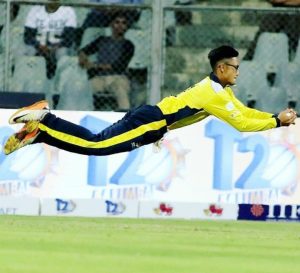
With the advent of T20 Cricket rising, new shots being innovated every day and playing fast & furious being the latest trend, Jay is well versed with that world of cricket too with aggressive brand of batting being his natural game.
In a candid interview with Cricketgraph, we throwed upon a lot of questions at him which he gracefully answered:
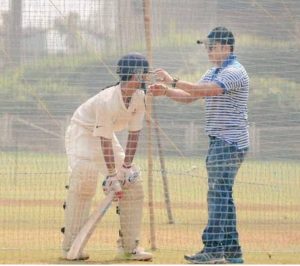
When we asked him how it all started, Jay said “From the age of 2, i was in to this game as my mom had told me from that age itself I was crazy for the game. I started practicing from the age of 8 but when I was 12, that’s when I started thinking about it professionally”
Born & brought up in Mumbai, the 23yr old studied at Bhadra New High School and later went to the famed Shardashram Vidyamandir School which has given Mumbai some of the finest first class & national level cricketers. Jay finished his further studies from Ramniranjan Jhunjhunwala College while he is getting trained under coaching of Vinod Raghavan Sir.
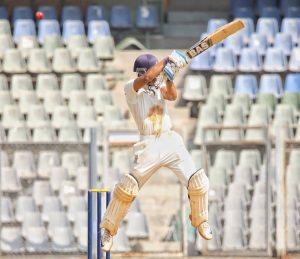
Jay has represented Mumbai team at U14, U16, U19, U23 as well as the senior team while he plays club cricket representing Victory CC in Mumbai. When we asked him to share some of his most memorable performances, Jay shared with us- “Getting 136 something last year in my comeback game against Saurashtra, a double hundred in the finals of U23 One Day Tournament, a 4th innings ton of 126 runs while chasing vs Baroda and my recent hundred in T20 mumbai (where he scored 110 off mere 60 balls for Sobo Supersonics) are some of my memorable performances so far.
Known for his eccentric and innovative shots including his famous version of “Bista Scoop”, Jay feels thankful to his parents and Coach Vinod Raghavan Sir for whatever he has achieved so far. When we asked him his long term goals, Jay smartly answered” –“I believe in living in the present, I don’t have a long term plan, I just want to win games for whichever teams I play for and keep performing consistently”
Team Cricketgraph wishes him all the luck for a great career ahead as he keeps entertaining one and all with his risqué shots and stylish batting.
Some grounds feel good the moment you walk in. Eprashala Sports Complex at Umbermali, Thane, is one of them. Spread across 4 acres with a clean 60-metre boundary on all four sides, it’s an outdoor natural cricket ground built for players who want real practice, real space, and real conditions.
The wicket is natural turf, prepared with the same care you’d expect at a professional venue. Tournaments, boot camps, match simulations everything sits well on this surface. Lights aren’t installed full-time, but they can be arranged when needed.
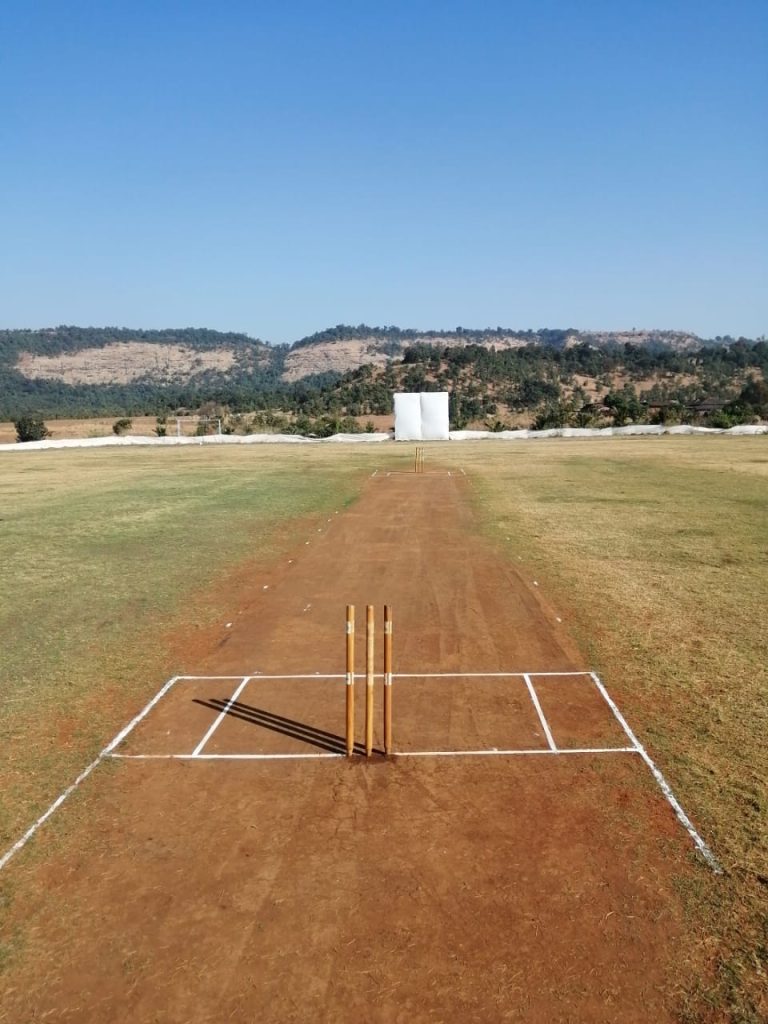
Facilities are where Eprashala surprises you. Twenty-three toilets and bathrooms keep things smooth even during big events. Ten European-style cottages sit around the property for teams planning multi-day camps. A swimming pool helps players cool down after long sessions. Both teams get their own pavilion seating, and on-demand tech like third umpire setup, DRS system, no-ball hooter, and even live broadcast support is available. Parking is ample, and catering can be arranged as well.


Training is sorted too. Three dedicated practice nets sit outside the main ground, open throughout the day, giving coaches and academies enough room to work on skills without any rush.
Add the quiet Sahyadri backdrop and you get a cricket environment that feels focused, calm, and honest no distractions, just the game.
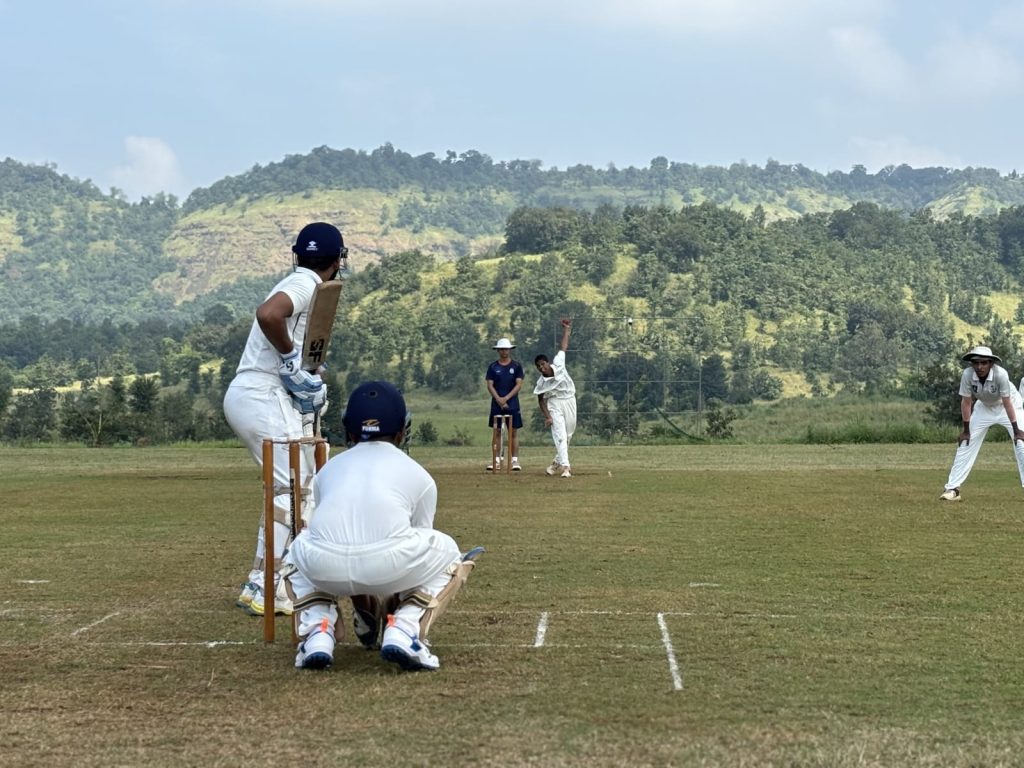
If you ever wondered where to run a professional camp or a serious tournament in Shahapur, Eprashala Sports Complex Cricket Ground is exactly that place. It’s built for cricketers who expect more from their practice. Address: Eprashala Sports Complex Cricket Ground, Shahapur, Thane.
Mumbai, December 15, 2025: Cricket’s rapid rise and development in the United States received a significant boost today with the official launch of LaGrange Cricket Stadium, a state-of-the-art venue being developed by LaGrange Cricket Holdings in LaGrange near Atlanta, Georgia. Set to open in 2027, the stadium will be a permanent home for cricket in the USA, redefining the sport’s presence in the region.
Built to meet international cricketing standards, LaGrange Cricket Stadium, spread across 45 acres, will feature 10,000 permanent seats, with the flexibility to expand capacity up to 25,000 for large-scale open-air concerts and entertainment events. Conceived as a multi-sport, community-focused destination, the venue will be capable of hosting national and international matches, positioning LaGrange as a key hub in the global cricket ecosystem.
Beyond elite sport, the stadium is designed to serve as an economic anchor and regional destination, promoting tourism, community engagement and year-round programming. The facility will also host local events and cultural initiatives, reinforcing its role as a shared space for the wider community.
The launch event, held today at a city hotel in Mumbai, was attended by former India cricketer Mr. Pravin Amre, Chief Strategy Officer of LaGrange Cricket Holdings, alongside Mr. Keval Patel (Founder, President & CEO), Mr. Gary S. Pasricha (General Counsel), Mr. Siddharth Das (Co-Founder, Operations), Mr. Jefferson Miller (Vice President, Cricket) and Mr. Michael Hall, League Operations Director, Caribbean Premier League (CPL).
India’s deep-rooted association with cricket adds strong relevance to this development. Strengthening this India–USA connection is the involvement of Amre, who brings Indian cricketing expertise and global experience to the development of LaGrange Cricket Stadium. His guidance ensures the venue meets international standards while carrying a distinct Indian touch, reinforcing the stadium’s vision of becoming a global home for cricket in the United States.
Mr. Keval Patel, Founder, President & CEO, LaGrange Cricket Stadium, said: “LaGrange Cricket Stadium is more than a traditional venue; it is a world-class sports and entertainment experience designed to redefine how cricket is enjoyed in the United States. Beyond hosting matches, it will serve as a vibrant hub for fans and the community, blending sport, culture, and live entertainment. The involvement of Indian cricketing expertise, particularly through Mr. Pravin Amre, brings credibility, experience, and a strong connection to one of the sport’s most passionate markets. This project highlights our commitment to creating an international-standard destination that drives the growth of cricket while delivering long-term economic and community value for LaGrange.”
Mr. Pravin Amre, Project Mentor, LaGrange Cricket Stadium, said: “Having played and coached at the highest level, I understand what it takes to build a truly international-standard facility. LaGrange Cricket Stadium is being developed with a strong focus on quality and global standards. From the playing surface to player facilities and the spectator experience, every detail is being carefully planned. This stadium has the potential to transform how cricket is played, watched and developed in the United States.”
With 2.5 billion fans worldwide, played in 110 member countries, cricket is the second most-watched sport globally and its footprint in the United States continues to expand rapidly through emerging professional leagues and increasing participation. LaGrange Cricket Stadium is positioned to play a central role in this growth, serving as both a premier competition venue and a development hub.
In addition to elite-level matches, the stadium will house youth academies and domestic leagues, creating a structured pathway for young talent and supporting the long-term growth of cricket in the US.
As cricket continues to find new audiences beyond its traditional markets, LaGrange Cricket Stadium stands as a symbol of cricket’s future in America, rooted in global expertise, strengthened by Indian cricketing influence and built to serve generations to come.
Aakash Pawar just earned a moment he’ll remember for a long time. The Mumbai pacer has been selected for the All India University men’s team that will tour Australia for the upcoming bilateral series against the Australian University Cricket Team in December 2025. What makes it even more special is that he’s the only player from Mumbai to find a place in this national squad.
Aakash’s rise hasn’t been sudden. He has been shaped and sharpened at Sanjeevani Cricket Academy in Bandra, where he trains under head coach Satish Samant. Anyone who has watched him bowl knows the kind of discipline he brings to the crease heavy ball, strong rhythm, and a mindset built for long spells. Coach Satish has played a big part in that. He’s been the steady voice behind Aakash, pushing him, correcting him, and making sure he never drifts away from hard work.
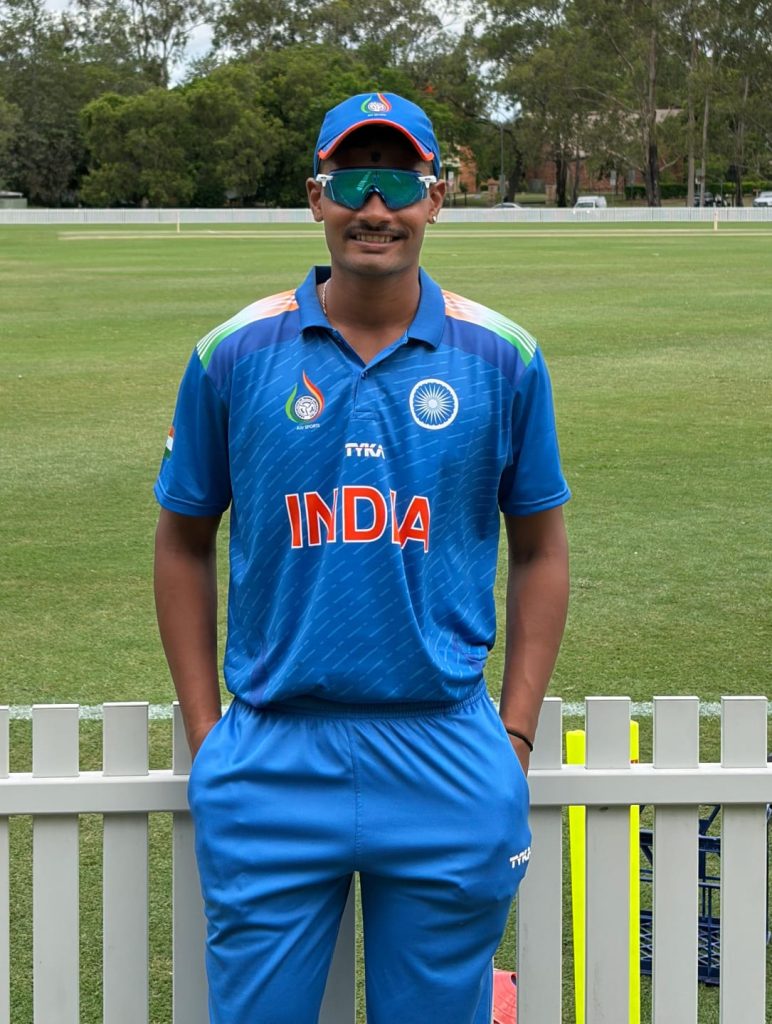
This selection came after trials conducted at GNDU, Amritsar, where players from across the country competed for a place in the squad. The Association of Indian Universities announced the final list, featuring top performers from universities like Delhi University, BHU, SRM Chennai, University of Kota, and others. Aakash made the cut as a right-arm medium pacer, representing the University of Mumbai.
For Sanjeevani Cricket Academy, this isn’t just another feather in the cap. It’s a moment of pride that reflects years of consistent coaching and the academy’s commitment to producing quality cricketers. For Coach Satish Samant, it’s validation of everything he has poured into his players.
As Aakash prepares to fly out with the Indian contingent, he carries not just his own aspirations, but the excitement of Mumbai’s cricketing community and his entire academy.
The U-23 Madhav Mantri Summer Camp Trophy league served up a close contest as Marine Lines B Centre chased down Shahpur A Centre’s target with one wicket remaining.
Shahpur A Centre chose to bat first and worked their way to 236 Runs all out in 64 overs. The innings never really broke free, but they kept the scoreboard moving enough to stay competitive.
The game came alive in the second innings when Marine Lines B Centre began their chase. The pressure swung back and forth, and the match stayed open right till the end as they inched their way to 237.
Here’s the thing even though Shahpur A Centre finished on the losing side, the performance everyone walked away talking about belonged to Neel Devkhile. He delivered a brilliant spell, sending down 14 overs for just 43 runs and picking up 5 wickets. On a day when bowlers had to fight hard for every breakthrough, Neel stood tall and kept his team in the chase right till the closing stages.
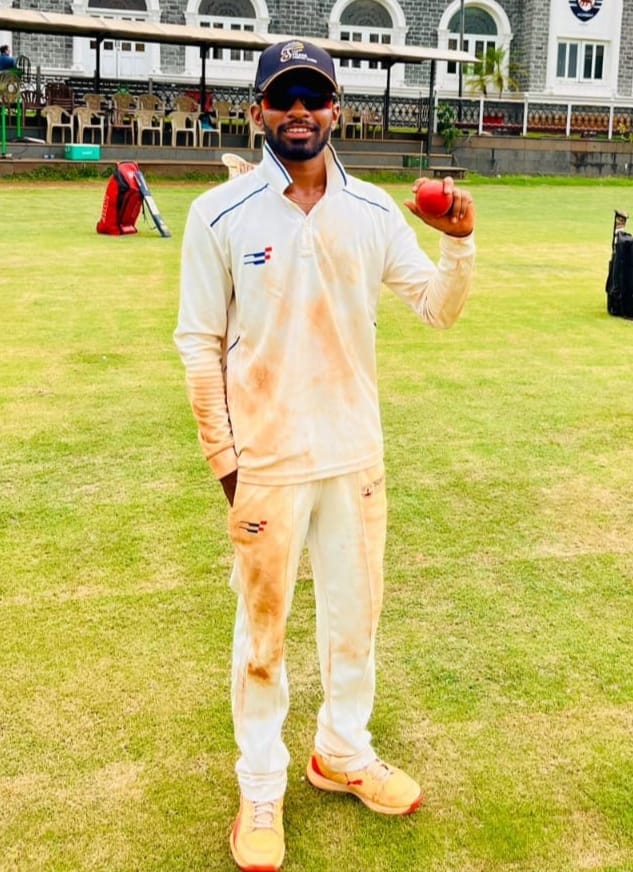
Shahpur A might not have crossed the line, but Neel Devkhile’s spell was the standout story of the match.
HCA and Sudaan 11 faced off in an individual match that turned into a high-scoring contest. HCA won the toss and chose to bat, putting up a competitive 267 in 40 overs. Their total set the stage for a serious chase, but what followed from Sudaan 11 was even better.
Sudaan 11 approached the target with intent and control, crossing the line in 38 overs. The chase was powered by two standout knocks. Ankit led the early charge with a commanding 107 off 84 balls, hitting 16 boundaries and 3 sixes.
The real heartbeat of the chase, though, was Atharva Sawant, who played one of the most mature innings of the day. He scored 97 from 90 balls, holding the innings together, rotating the strike whenever required, and shifting gears at the right moments. His calm presence kept Sudaan 11 ahead of the rate and ensured there was no panic despite the rising pressure.
With these two big knocks, Sudaan 11 wrapped up the chase with 4 wickets in hand, sealing a memorable win built on confidence and clean batting.
The U-16 Tukaram Surve Cricket Tournament 2025 final turned into a slow-burn thriller that felt straight out of a long-format classic. Ganpat Bhuvad XI and Sadashiv Satghare pushed each other deep across two days, but Ganpat Bhuvad XI held their nerve to lift the title by a narrow first-innings lead.
Ganpat Bhuvad XI chose to bat first and made it clear they were ready for a long stay. The innings didn’t have fireworks, but it had patience, discipline, and two boys who batted like they were made for red-ball cricket. Dhruvshil Hire anchored the top order with a solid 58 off 123 deliveries. At the other end, Smit Pomendkar dug in for 128 balls to craft a valuable 50, showing the temperament coaches dream of in youth cricket.
Their partnership and approach helped the team post 195 in 79 overs, a total that looked modest on paper but proved decisive once the pitch began to tire.
Sadashiv Satghare replied with determination, but Ganpat Bhuvad XI never let them settle. The breakthrough moment came courtesy of Smit Pomendkar again this time in the field. His sharp run out broke a developing stand and tilted the game. Sadashiv Satghare eventually folded for 155, giving Ganpat Bhuvad XI a 40-run first-innings lead.

Day two was more about survival and control. Ganpat Bhuvad XI returned to add 44 crucial runs, stretching their advantage and sealing the title on the back of that hard-earned first-innings cushion.
What this really means is that while many players contributed, the final belonged to Smit Pomendkar. A half-century built on patience, a game-changing run out, and the calm presence he showed throughout the match made him the heartbeat of the champions’ campaign.
Ganpat Bhuvad XI walk away with the trophy, but Smit walks away as the name everyone will remember from this final.
Parsee Gymkhana produced a powerhouse performance in the Purshottam Shield, outclassing Juhu Vile Parle Gymkhana Club by 252 runs. The day belonged to Ayush Vartak, whose stunning counterattack from No. 6 turned the innings into a run-fest.
Batting first, Parsee Gymkhana posted a towering 435 for 7 in 45 overs. The platform was built by JayJain, who came in at No. 3 and struck a polished 109 off 65 balls with 9 fours and 7 sixes.
Then came the game-changing knock from No. 6. Ayush Vartak walked in and shifted the entire tempo of the innings. He hammered 116 off just 56 balls, unloading 9 sixes and 9 fours. It was a clean-hitting masterclass, the kind that drains the opposition and energizes the dressing room in one go. Nutan Goel added to the pressure with a strong 95 off 54 balls, ensuring Parsee Gymkhana stayed ahead of the game throughout the innings.
The chase was always going to be steep, and Parsee’s bowlers made sure it stayed that way. They attacked in partnerships, never allowed momentum to build, and bowled out Juhu Vile Parle Gymkhana Club for 183 in 29 overs. Ayush added to his all-round impact by picking up a wicket as well.
Here’s the thing this wasn’t just a big win. It was one of those matches where a single innings changed the entire outlook. Ayush Vartak’s century at No. 6 didn’t just push the score forward; it broke the contest open.
Parsee Gymkhana’s dominant performance, fueled by Ayush’s remarkable hitting and disciplined bowling, keeps them firmly on track in the Purshottam Shield. His knock will be one of the standout highlights of the tournament.
Cricket Explained Academy walked into the U-12 Little Champs Tournament 2025-26, organised by Fiona Sports, with real intent. They faced St. Mary International School and chose to bat after winning the toss. What followed was a controlled and confident batting display.
Here’s the thing. Captain Jiaan Lakhmani set the tone from the start. He played an innings far bigger than his age, scoring 113 off 106 balls. His timing stood out, and those 13 boundaries kept the scoreboard moving. He didn’t rush. He built his innings patiently, then opened up once he was set.
Vedhas Ghate played the perfect supporting role at the other end. His 51 off 55 balls, with five fours, kept the partnership steady and helped push Cricket Explained Academy to an impressive 241 for 2 in 30 overs.
The match couldn’t continue into the second innings and had to be abandoned, but the cricket on display in the first half said enough. Jiaan’s knock was the kind that defines a young captain calm head, clean strokeplay, and the ability to lead from the front.
A strong outing for Cricket Explained Academy, and a standout day for their captain.
At just 17 years of age, Rounak Waghela is already making waves in Indian domestic cricket, marking himself as one of the most exciting young prospects in Delhi’s cricketing circuit. A left-handed batting all-rounder, Rounak has stepped into the prestigious Ranji Trophy a stage where very few teenagers ever appear, let alone thrive. His early entry into first-class cricket speaks volumes about his talent, temperament, and the faith that Delhi selectors have placed in him.
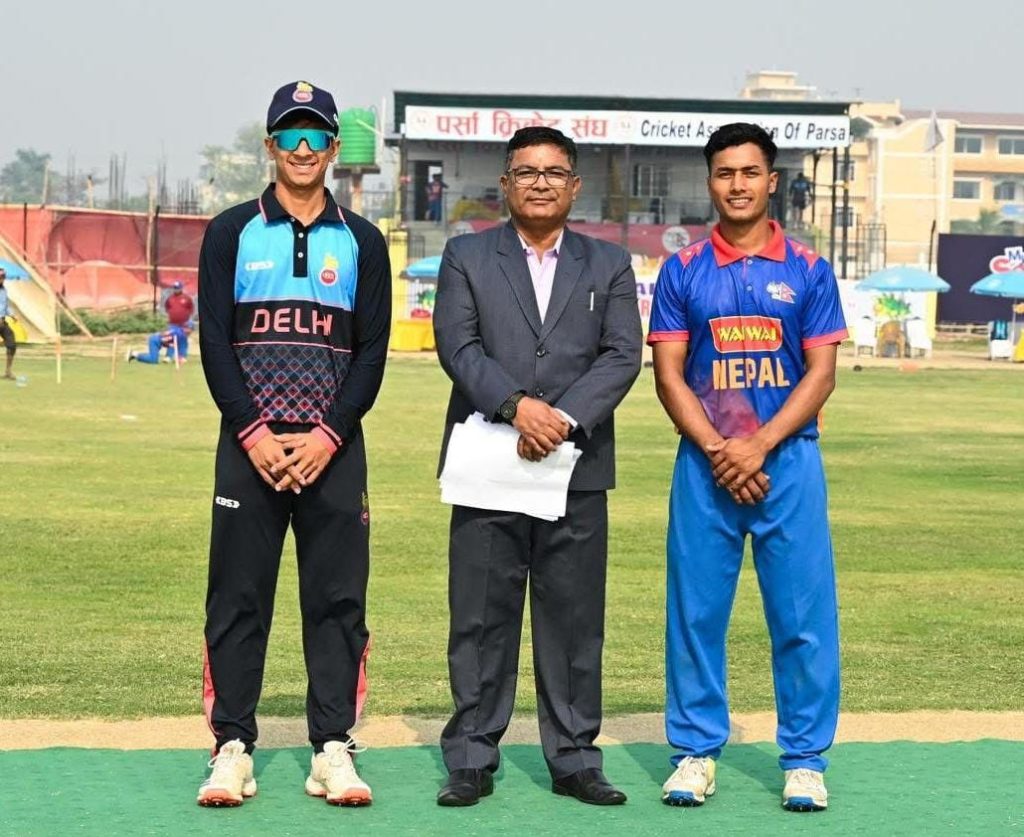
Rounak’s cricketing journey has been strongly inspired by his idol, Ravindra Jadeja. Much like Jadeja, he combines sharp, dependable batting with skillful bowling, giving his team versatility and balance. His performances have already begun turning heads; Rounak’s breakout moment came during the C.K. Naidu Trophy, where he picked up an astonishing 31 wickets in just the first five matches. Such an achievement, especially at his age, highlights not only his natural ability but also his incredible work ethic and hunger to succeed.
Behind Rounak’s rapid rise is the dedicated guidance of his coach, Dev Dutt Baghel. A mentor known for his disciplined and holistic approach, Dev Dutt has played a crucial role in shaping Rounak’s skillset and mental toughness. From refining his batting technique to sharpening his bowling variations, Dev Dutt has ensured that Rounak is equipped to handle the pressures of higher-level cricket. His focus on all-round development fitness, technique, mindset, and match awareness has been instrumental in preparing Rounak for the big stage.
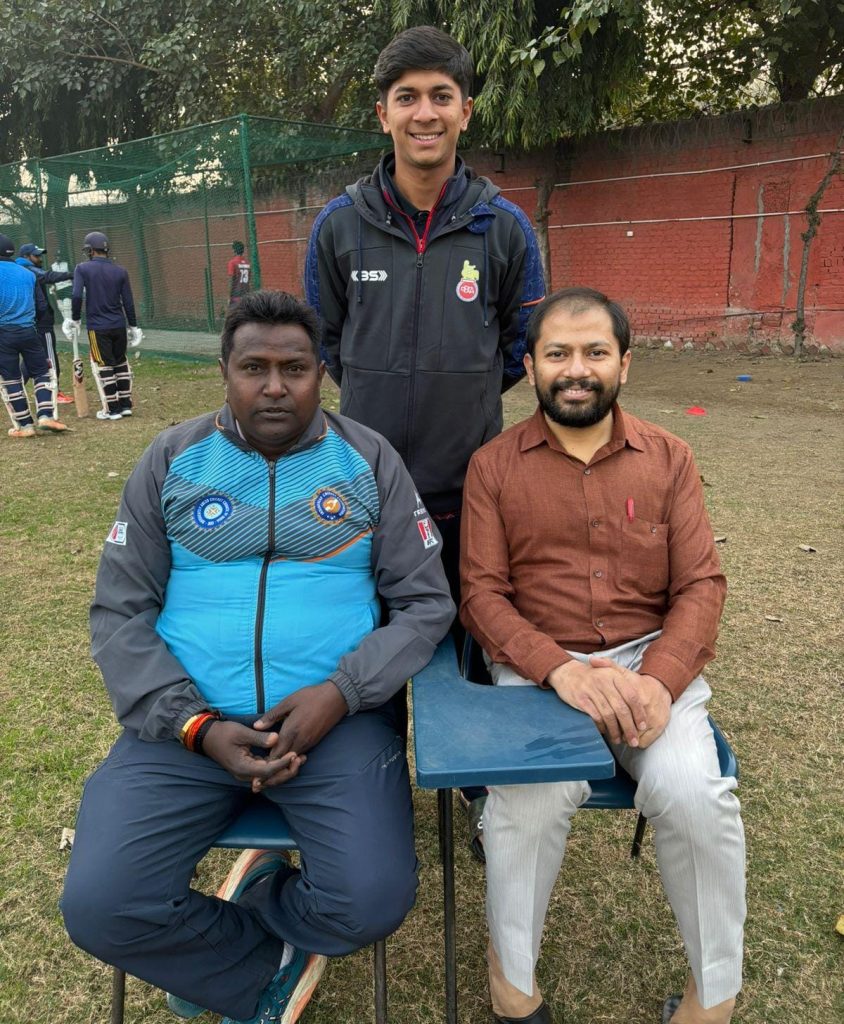
Coach Dev Dutt Baghel’s contribution to Delhi cricket extends beyond individual players. He is a key figure at the Venkateshwar Cricket Academy, an institution that has become a nurturing ground for young, raw talent in the city. The academy provides structured training, quality coaching, and a professional atmosphere for budding cricketers to grow. Many young players have shaped their careers here, benefiting from the academy’s emphasis on discipline, performance improvement, and continuous learning. Situated in Delhi, the academy strives to create a pathway for young athletes by giving them access to proper facilities and supportive mentorship. While it remains rooted in grassroots training, it also encourages players to dream big and prepare for state and national-level challenges.

A significant platform supporting the recognition of emerging talents like Rounak is CGTP CricketGraph Talent Promotion. CGTP focuses on highlighting local talent through electronic media, ensuring that young cricketers who perform exceptionally get visibility across the cricket community. By featuring match highlights, interviews, performances, and player stories, CGTP plays a vital role in bridging the gap between grassroots cricket and broader recognition. For players like Rounak, such exposure not only boosts confidence but also opens doors to further opportunities.
Rounak Waghela’s story is still in its early chapters, but his journey so far reflects promise, determination, and the impact of strong mentorship. With continued guidance from coaches like Dev Dutt Baghel, support from institutions like Venkateshwar Cricket Academy, and platforms like CGTP amplifying young talent, the future of Indian cricket looks brighter than ever.
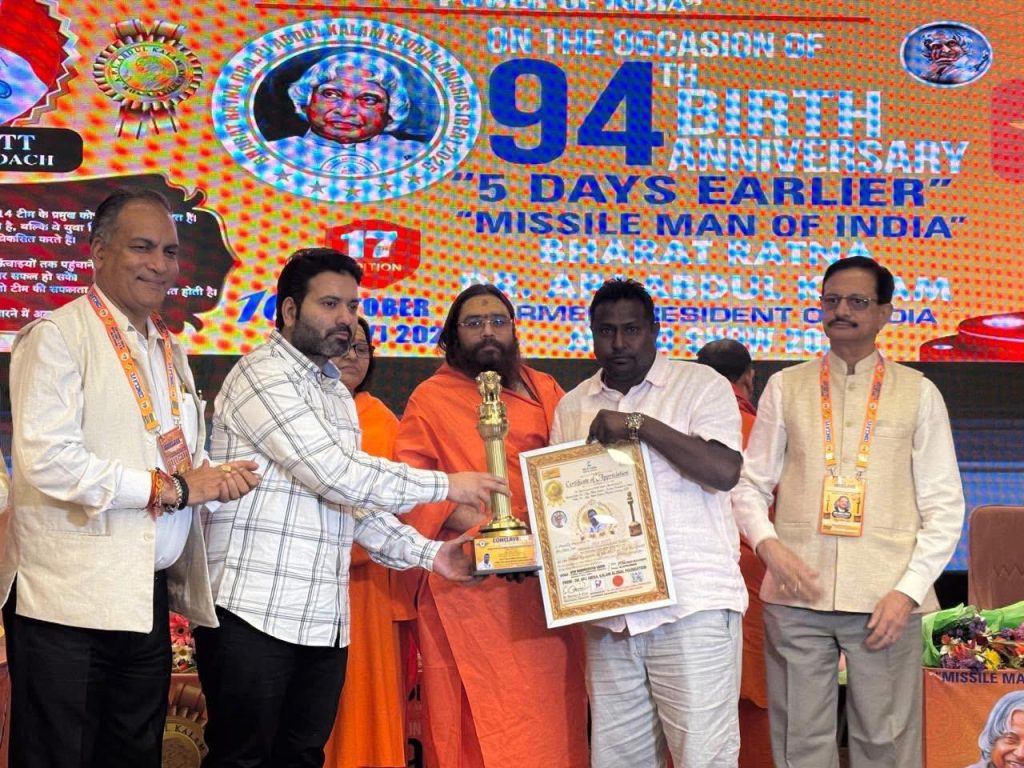
When a batter dominates an age-group tournament this convincingly, you don’t hide it you celebrate it. And Ayush Sachin Vartak gave Mumbai plenty to cheer for in the U23 State A Trophy.
Ayush finished the tournament as Mumbai’s highest run-getter, piling up 363 runs in just 6 innings. What really stands out is the consistency and intent behind those numbers. He averaged 72.60, struck at 169.62, and produced a towering unbeaten 132 along the way. One century, two fifties, and a stack of match-defining knocks set the tone for Mumbai throughout the campaign.
What this really means is that Ayush wasn’t just scoring runs; he was taking games away from opponents. His power-hitting made a serious impact too. With 26 sixes, he finished as the second-highest six-hitter in the entire tournament, showing he could switch gears and dominate when needed.
Across 8 matches, he showed maturity, range, and fearlessness traits that make him one of the most exciting young batters emerging from the MCA system right now.
For Mumbai, the U23 State A Trophy brought many positives, but Ayush Vartak’s breakout run sits right at the top.
